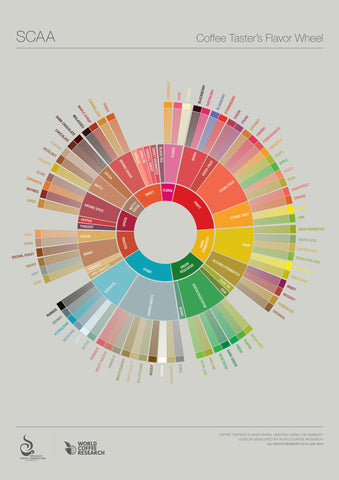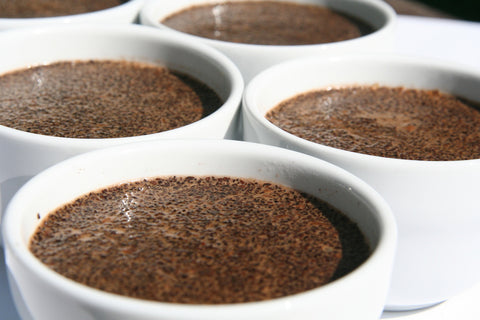 How often have you enjoyed a great cup of coffee but struggled to describe the qualities in it that impressed you? Well, you're not alone.
How often have you enjoyed a great cup of coffee but struggled to describe the qualities in it that impressed you? Well, you're not alone.In the coffee industry, the ability to note and convey the distinct properties of a coffee is essential. From identifying the finest green coffees to roasting and marketing them, descriptive words matter. So, the Specialty Coffee Association of America (SCAA) developed a handy reference tool that helps to define two fundamental coffee traits: taste and aroma— characteristics that go hand in hand—and expands on each one with key terms.
Known as The Coffee Flavor Wheel, this tool serves as a framework for professional tasters to talk and write about their impressions of a coffee. It's far from exhaustive, yet it helps to shape language around a coffee's unique taste and aromatics. It also serves as a useful "condensed thesaurus" for any coffee lover who appreciates the complexity of a fine cup. Try it the next time you're at a loss for words!
THE BASICS OF COFFEE TASTING
 Experienced coffee tasters follow a strict routine during "cupping," a blind tasting process used to evaluate samples of coffees. They deliberately slurp coffee and swirl it around the surface of the tongue and mouth. This is to obtain the full experience of the coffee and the unique combination of sensations in the nose, on the tongue, and in the mouth.
Experienced coffee tasters follow a strict routine during "cupping," a blind tasting process used to evaluate samples of coffees. They deliberately slurp coffee and swirl it around the surface of the tongue and mouth. This is to obtain the full experience of the coffee and the unique combination of sensations in the nose, on the tongue, and in the mouth. For the most part, our senses of smell and taste are inseparable. Without our sense of smell, taste impressions are limited. The tongue detects four basic sensations: sweet, sour, salty, and bitter. Much of what we experience as taste depends upon our sense of smell.
Follow the lead of the coffee professionals and allow your sense of taste and smell to mingle. Enjoy the tactile feel of the coffee on your tongue.
Now that you’ve taken a good whiff and your first sip, it’s time to let your tongue do the talking. Of all the facets of coffee, taste is the most complex to discuss.
DESCRIBING A COFFEE'S TASTE QUALITIES
A range of descriptions are used to convey the taste qualities of coffee. Since the flavor wheel offers a limited number, we have listed several common terms below:
Bitter: Taste sensation perceived at the back of the tongue, e.g., the bitterness in dark chocolate or stout.
Bright: Coffee with a pleasing acidity, often described as "lively."
Buttery: A sweet, rich flavor and texture.
Clean: High-quality coffee that has a distinct taste with no flavor defects.
Crisp: A clean coffee with bright acidity.
Fruity: Coffees that have a berry or tropical fruit-like taste or aroma.
Soft: Low-acid, mild-flavored coffees.
Sweet: A taste description associated with pleasant flavor and mouthfeel.
Tangy: A pleasurable, lingering acidity that resonates on the tongue.
Winey: A taste similar to that of red wine or possessing a fruity quality.
